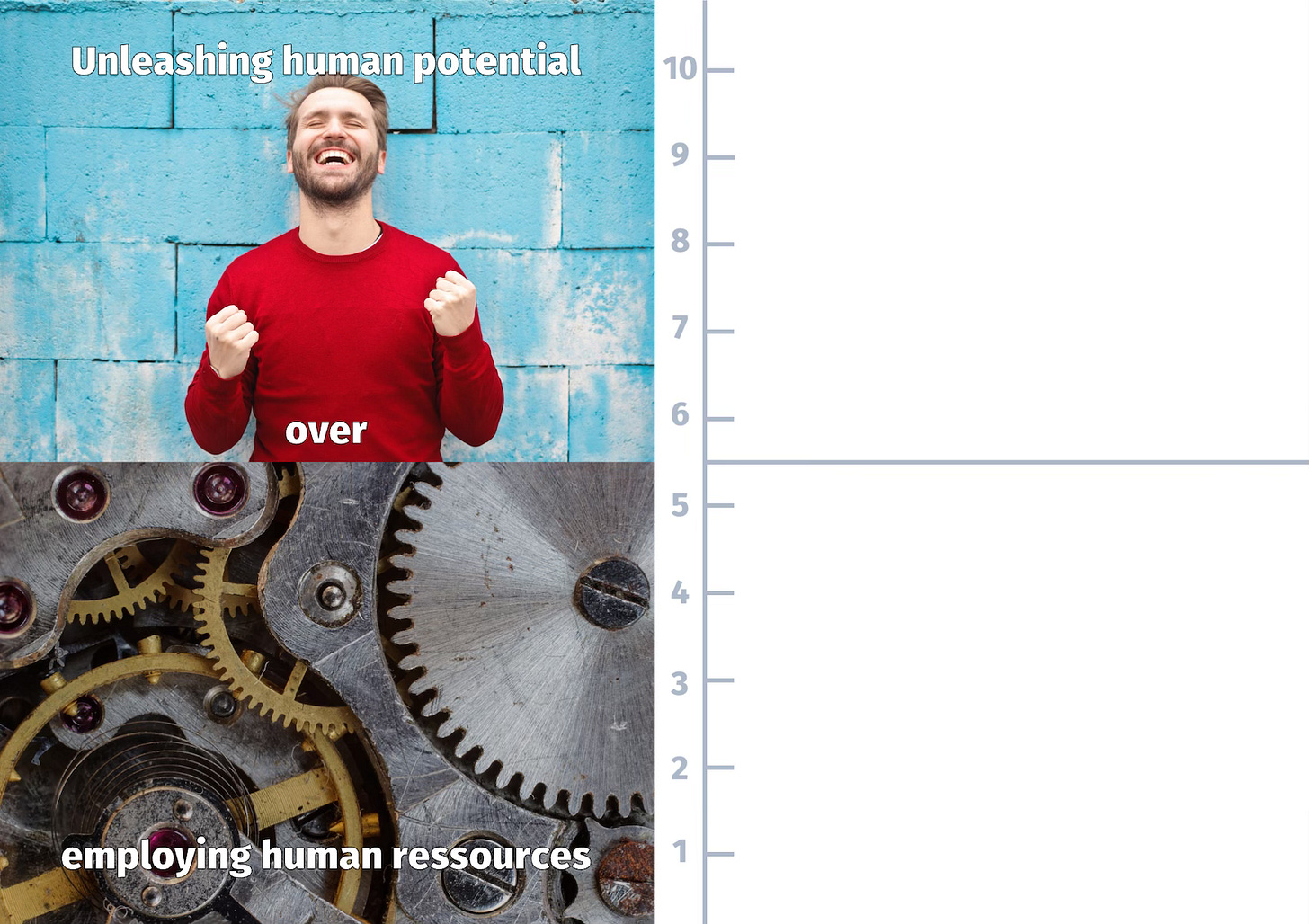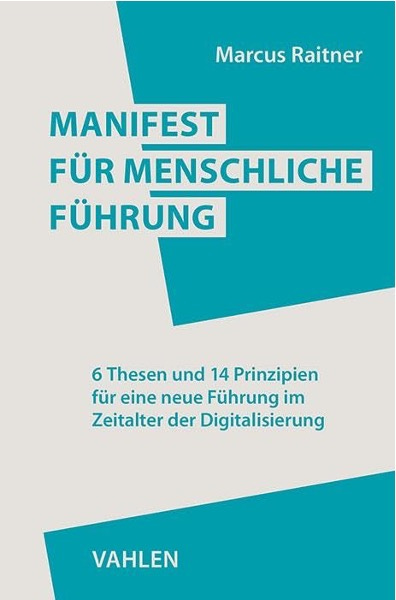One More Thing
This bonus chapter of my book gives you several options how to run a workshop with your leadership team to reflect on the theses and principles of the manifesto. Either on your own or with my support.
The Manifesto for Humane Leadership is meant to be food for thought for reflecting on one's leadership behavior. However, the six theses also provide an excellent framework for an interactive workshop where leaders can reflect on the theses jointly. Since the theses were first published, I have successfully held these workshops with different groups, large and small, in various companies. To get many more people thinking about new leadership, I describe the underlying workshop format in this Appendix and make all the templates and materials available for free on my homepage.
Key Questions
In their specific format, all six theses of the Manifesto for Humane Leadership span a space for personal development. We can explore this space readily with a scaling question. More specifically, each thesis is given a scale from one to 10. For the first thesis, “Unleashing human potential more than employing human resources,” this means that one corresponds to the classic use of human resources in the Taylorist machine model, and ten refers to the gardener's attitude that brings human potential to bloom.
The following scaling questions can now be asked:
Where do I currently stand on this scale concerning this thesis?
What am I already doing that makes me see myself at this level?
What could I try out tomorrow and do differently to get to the next level?
The first question about the concrete positioning only pithily triggers the reflection; this should not lead to competition. The following two questions are much more critical. They should invite people to think about their leadership behavior: Regarding good practices, on the one hand, with a focus on what is already there, and on the other hand, guiding action with a focus on what could be tried tomorrow, not to reach the full ten but rather to improve a bit.
Basic Structure of the Group Workshop
Six movable walls or similar are required, on which the six theses (printed out in DIN A1 format as shown in the above image) can be attached. Sticky dots and sticky notes in two colors (green and yellow) serve as working materials. The complete template I usually use is available as a PowerPoint template in German and English on my homepage and can be used freely.
In its simplest form, the workshop is for up to seven people who move from thesis to thesis and work together on the three scaling questions described at the beginning. The group starts with the first thesis. Each person receives a sticky dot and sticky note in two colors (green and yellow). First, everyone reflects silently for five minutes on the scaling questions and notes the answers on the green (for the practices already in place and lived) or yellow sticky notes (for the possible next concrete steps).
After this phase of reflection, the group members present their positioning to each other, what has brought them there (green notes), and what could take them a step further (yellow notes). This should take a maximum of five minutes per person. As with brainstorming, only questions for understanding are allowed. It is not about right or wrong or ranking but about seeing what is already there and what steps could be taken next. And it's about being inspired by the answers of others. Working on a thesis in a group takes around twenty to thirty-five minutes.
The group then switches to the following thesis and repeats the process. The workshop ends after the sixth thesis with a short feedback round in which each person describes their most crucial insights (“What have I learned here and now?”).
Setup for Medium-Sized Groups
The workshop described above can also be conducted with up to six groups in parallel, i.e., up to forty-two people in total, by rotating the groups in parallel through the theses at the six stations. The room must, therefore, be large enough so that the six groups can discuss in parallel at a table or on a movable wall without disturbing each other. When the groups switch to the next thesis, the moderator of this station can either replace the poster of the previous group with a new one or, I prefer this variant, briefly summarize the earlier results for the incoming group in the style of a World Café.
Setup for Larger Groups
For even larger groups, the “1-2-4-All” format from “Liberating Structures” is beneficial. I also often incorporate it for one or two selected theses as an interactive element in my keynotes on the Manifesto for Humane Leadership. With 1-2-4-All, large groups can work on a common question, each participant alone for one minute, then in pairs for two minutes, and again in fours for four minutes. In the end, each group of four briefly presents its most outstanding idea or insight to everyone. The exact process of 1-2-4-All is described in detail on the Liberating Structures website or in the book of Henri Lipmanowicz and Keith McCandless.
The questions to be dealt with are based on the three scaling questions described at the beginning. After briefly introducing the respective thesis, everyone writes their answers on paper. Three minutes should be set aside for this. The insights gained are then discussed and condensed, first in groups of two and then in groups of four. And at the end, the highlights of each group of four are shared with everyone.
This exercise takes twelve to thirty minutes per thesis, depending on the number of ideas and people. The first run-through often takes longer because many ideas come up here that would also fit the other theses.
PS. Although the above pretty accurately describes the workshop such that an experienced facilitator can run it, I’d be more than happy to hear from you in case you prefer me to facilitate that for your leadership team. That also has the benefits that we can run it as a mix of keynote and workshop. There are still some slots available for 2025. Just drop me an e-mail.
Table of Contents
In case you want to read the entire book end to end, it is available on Amazon in many countries as hardcover, paperback, and for your Kindle (and also on Leanpub). And all my German readers can get the German edition wherever they prefer to buy their books.




